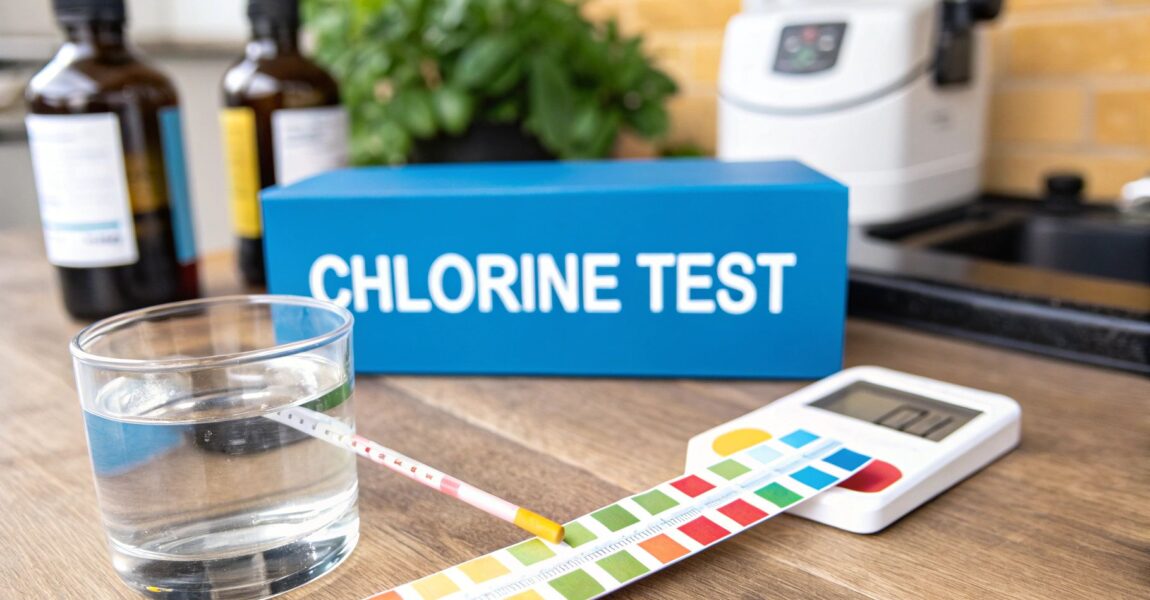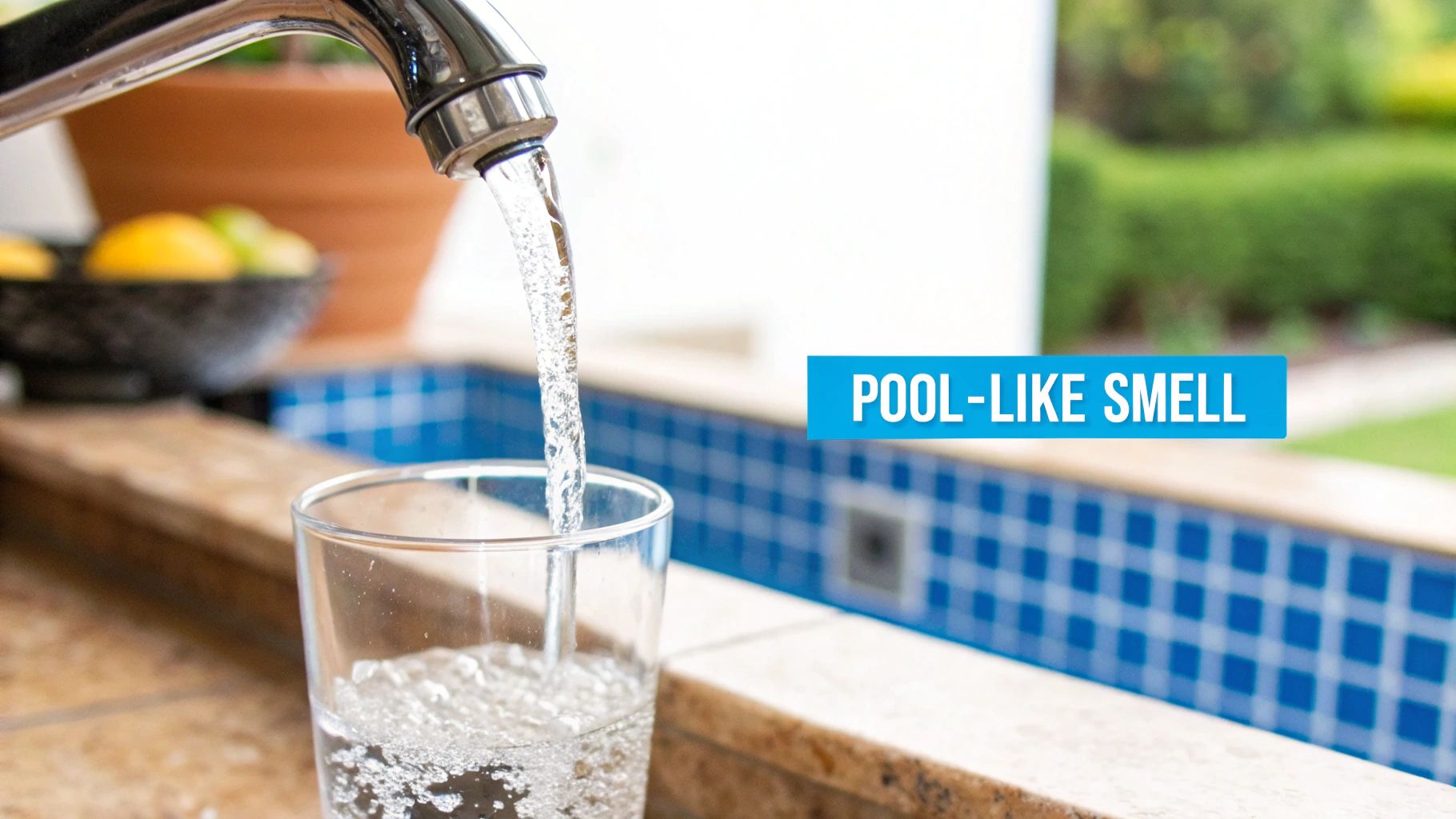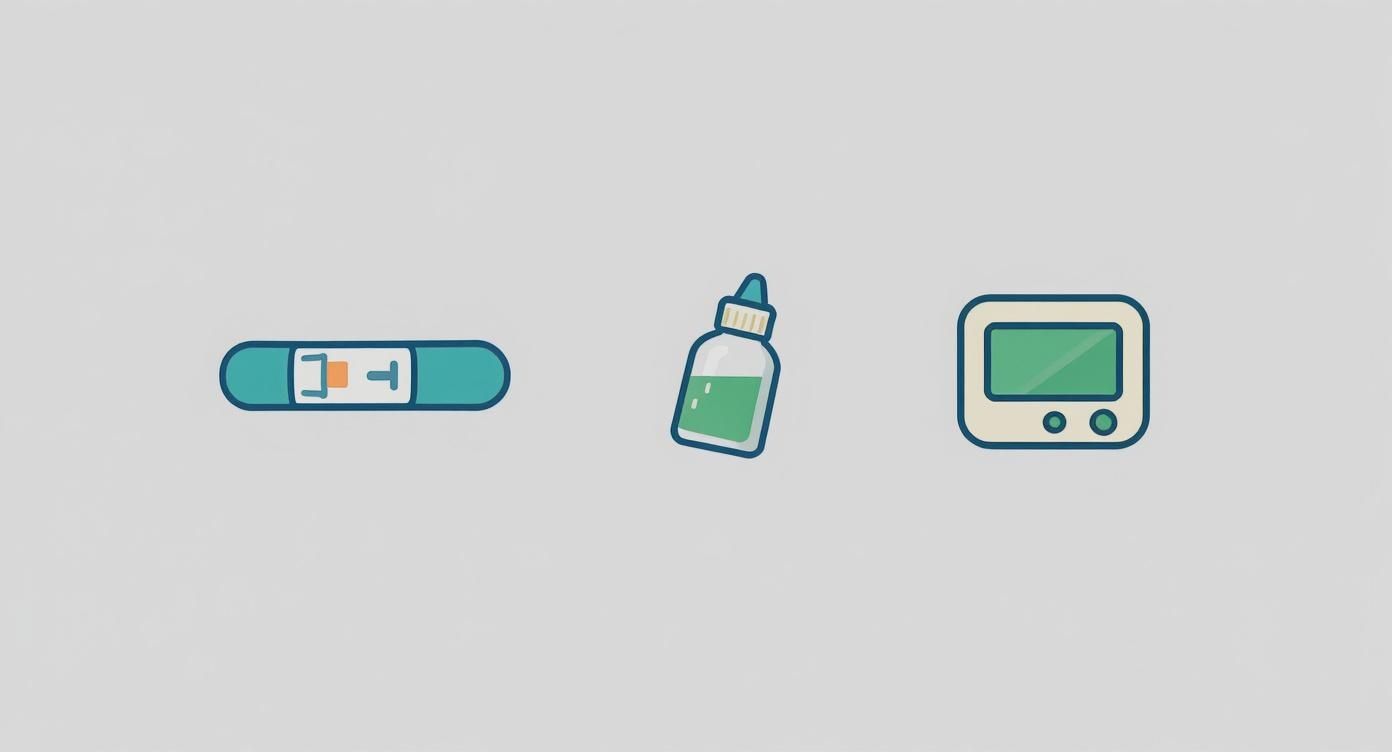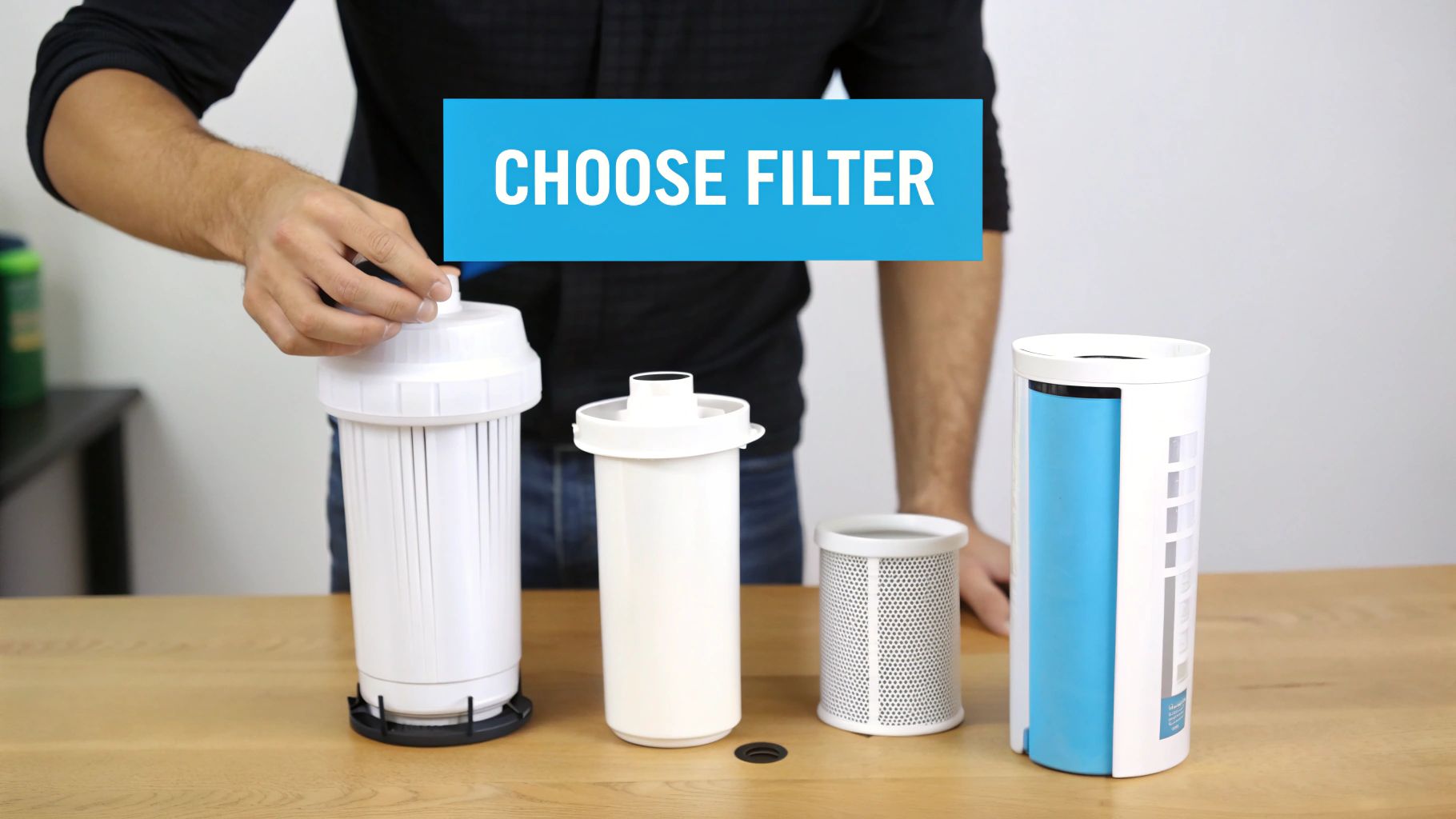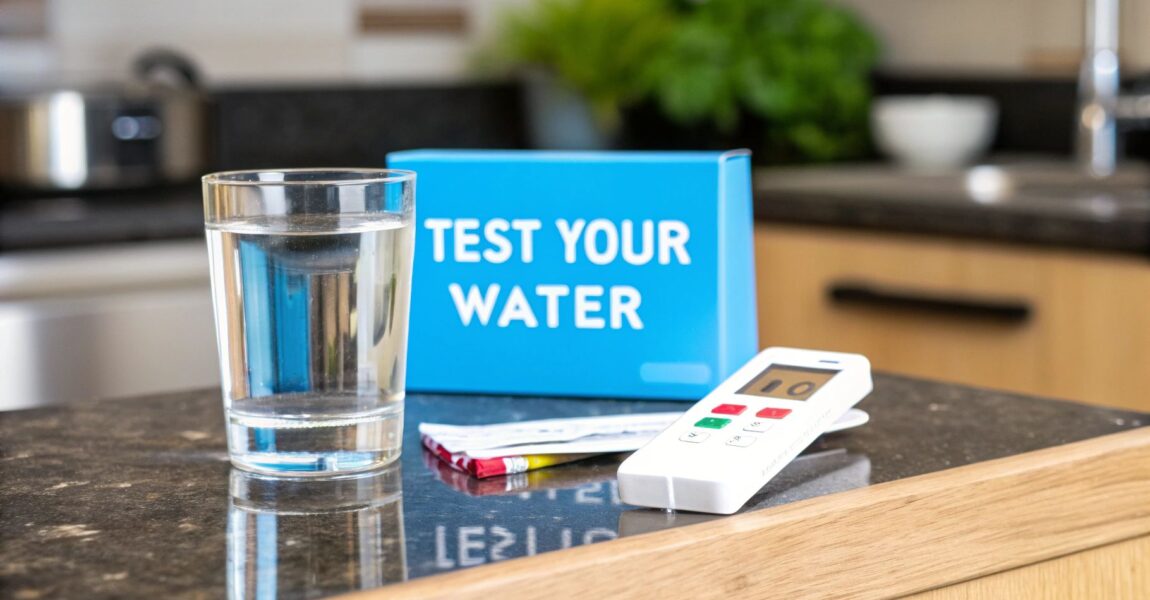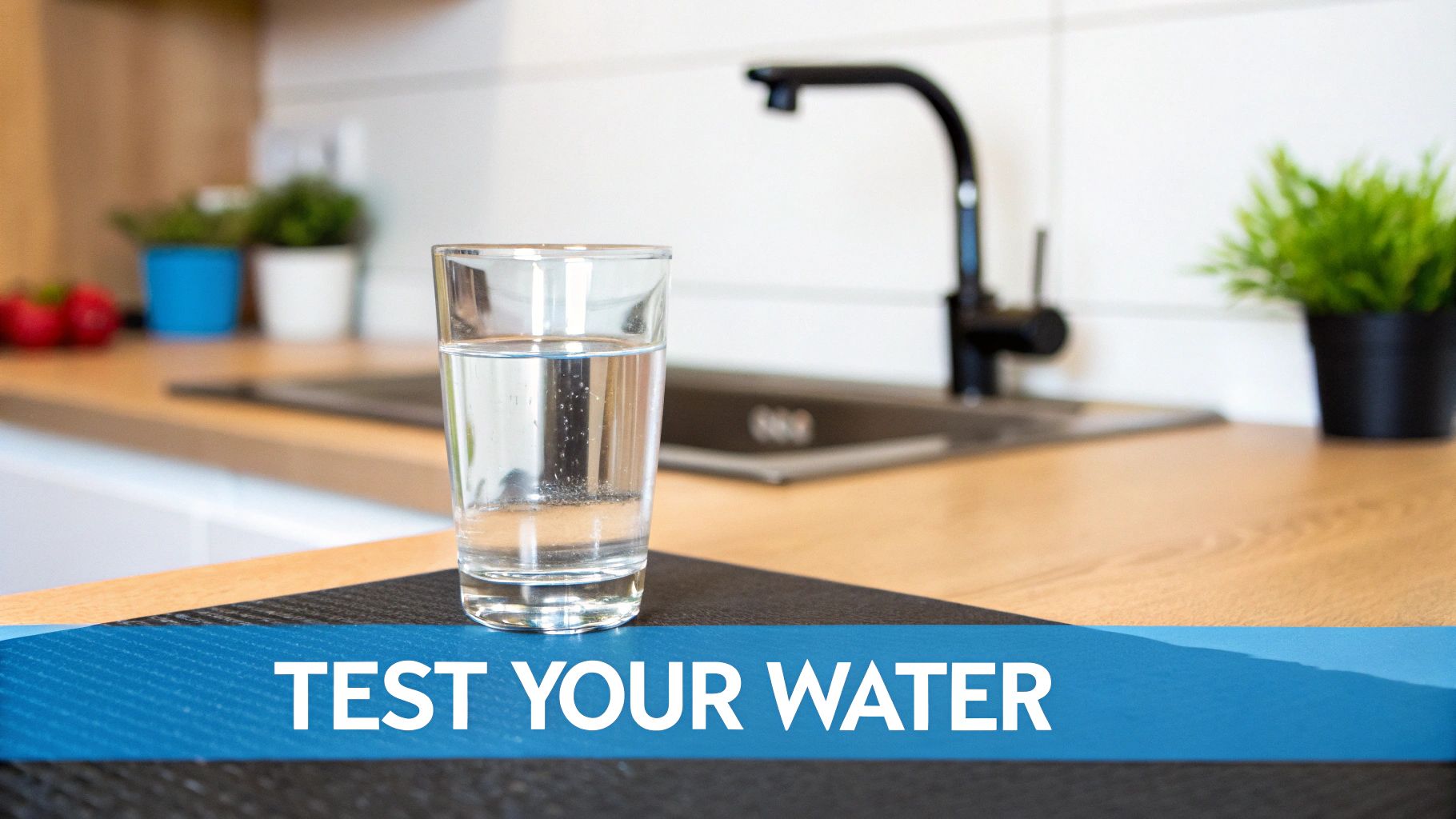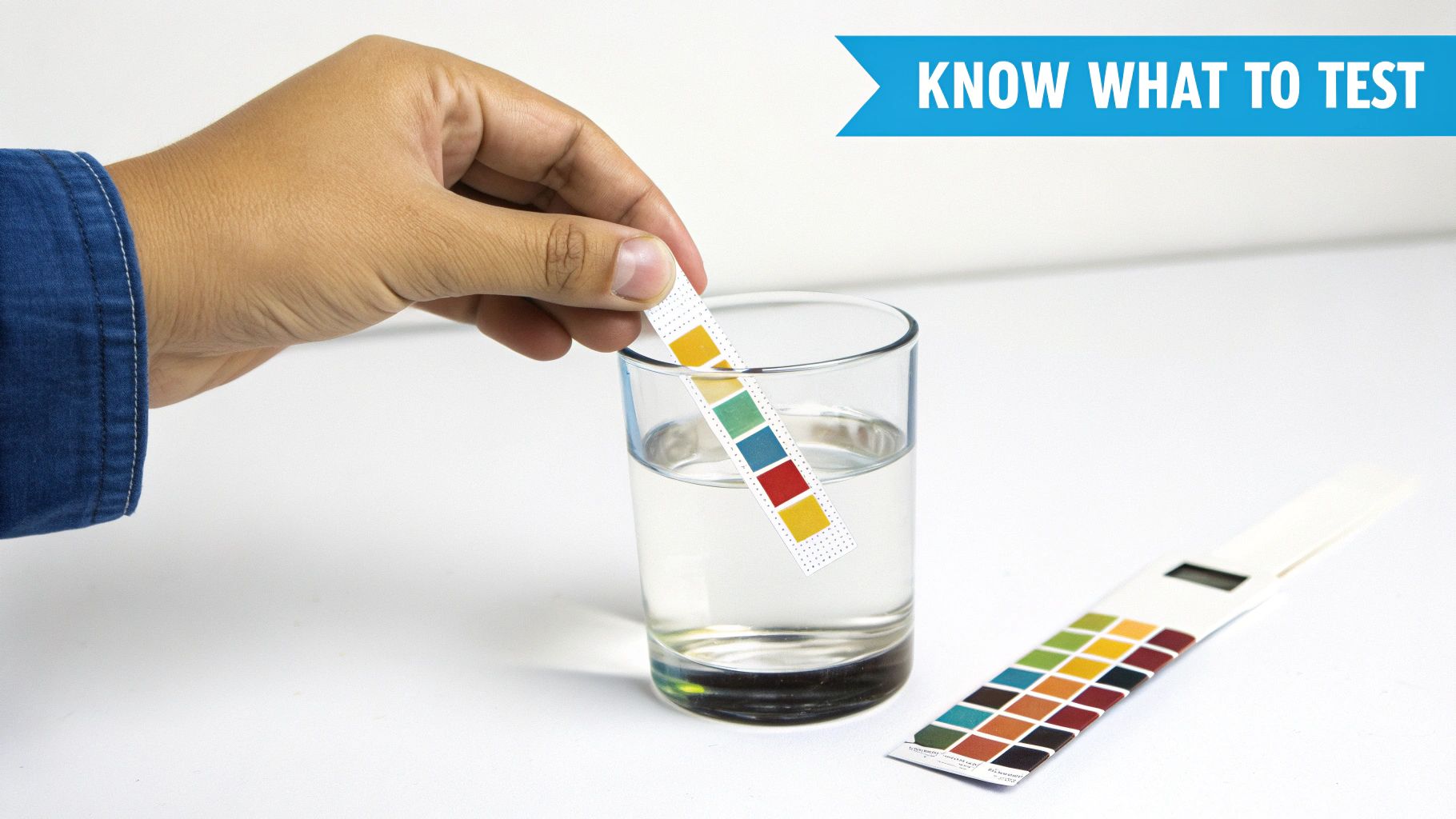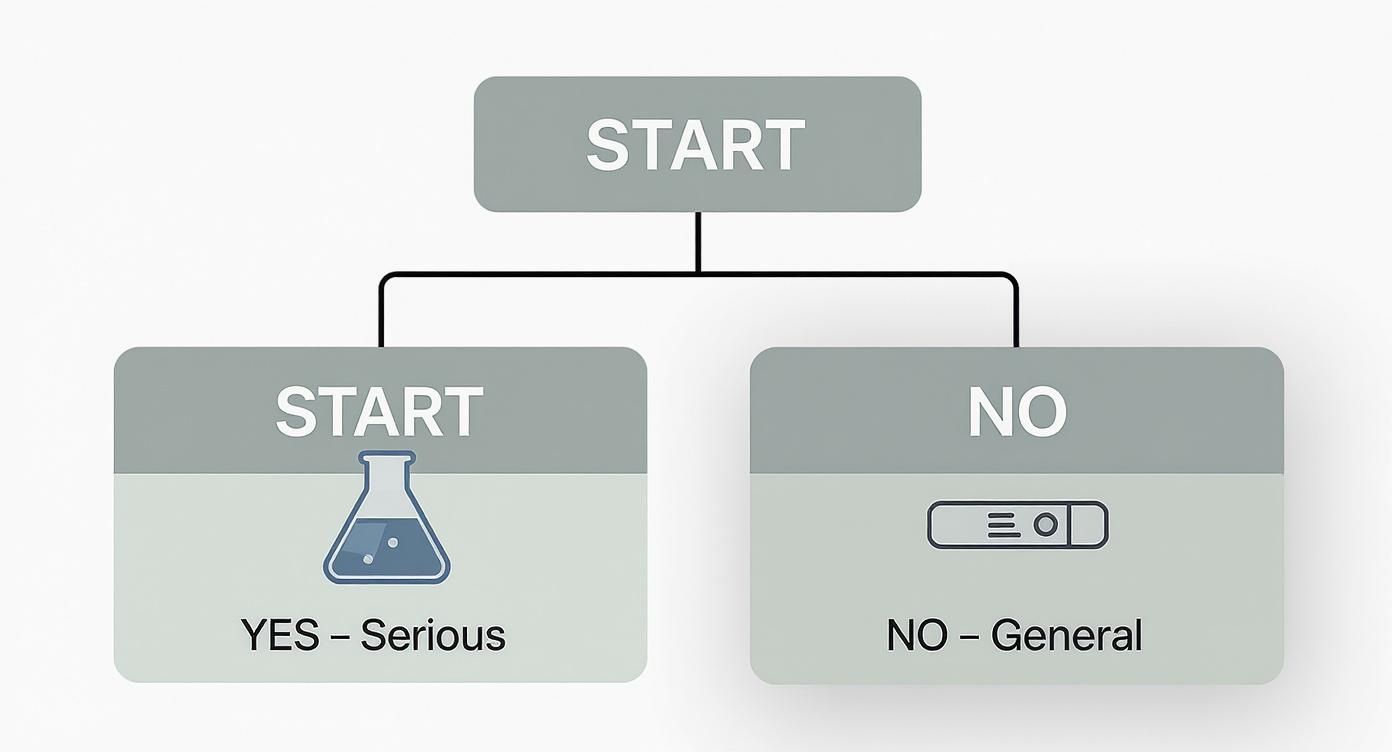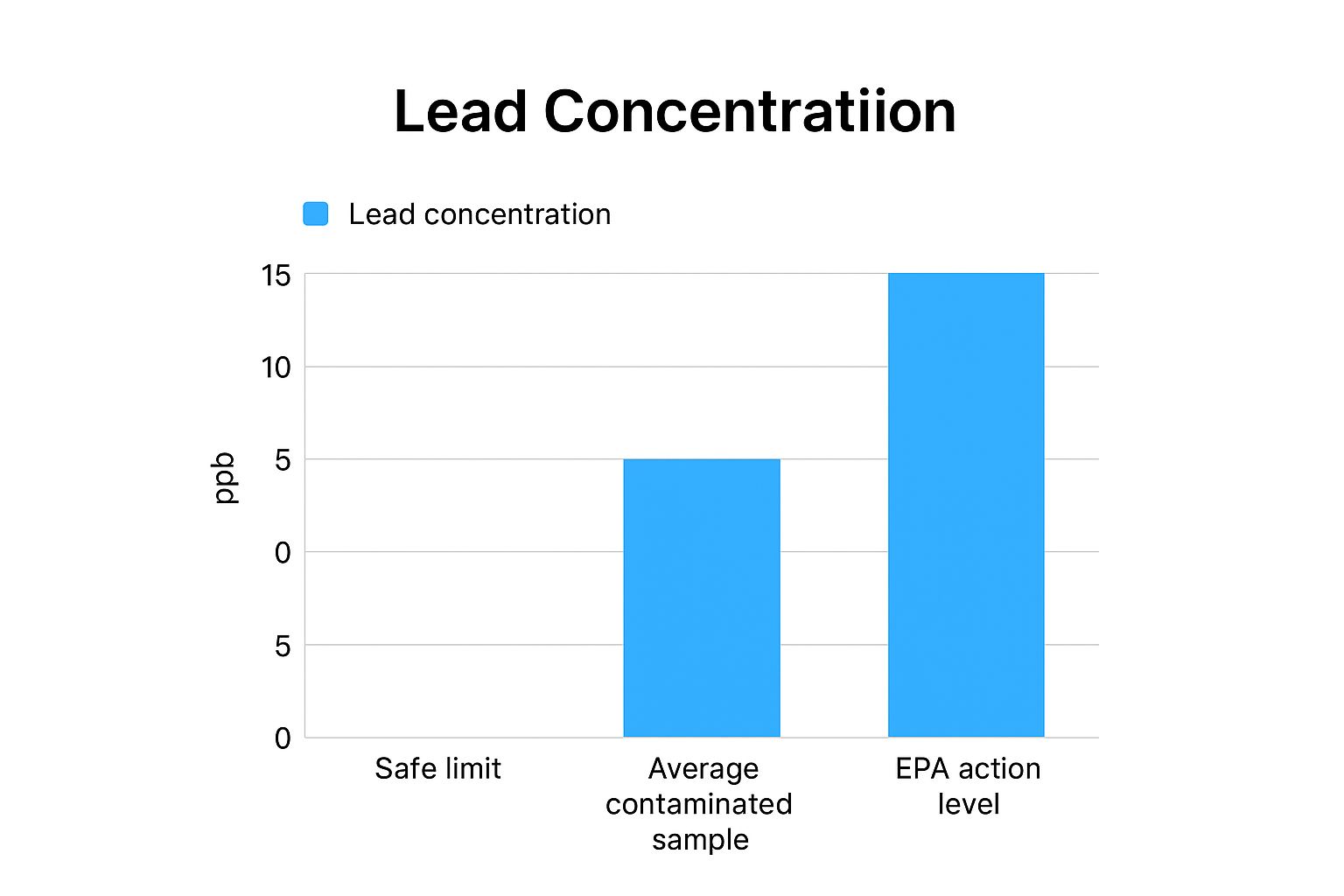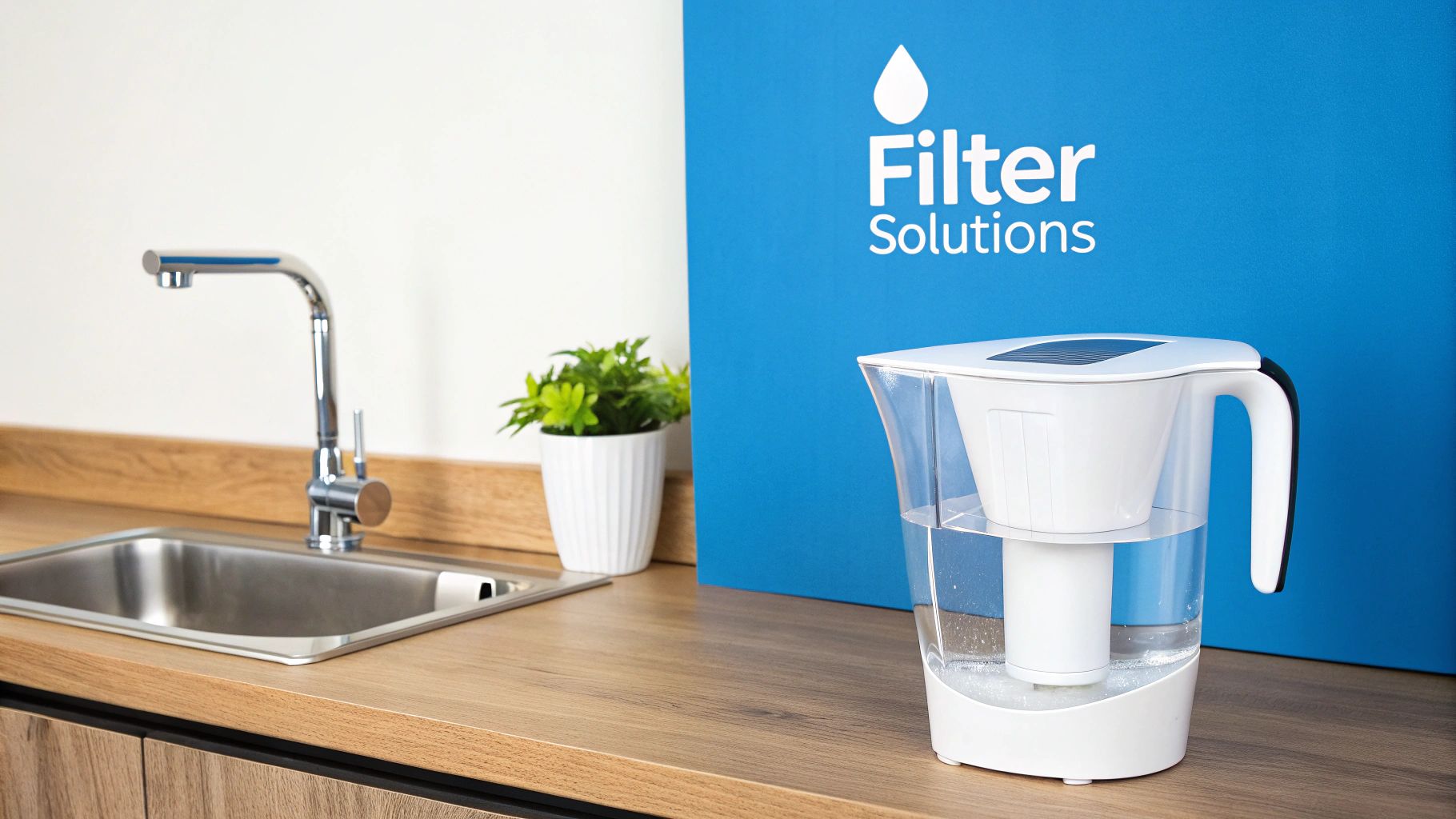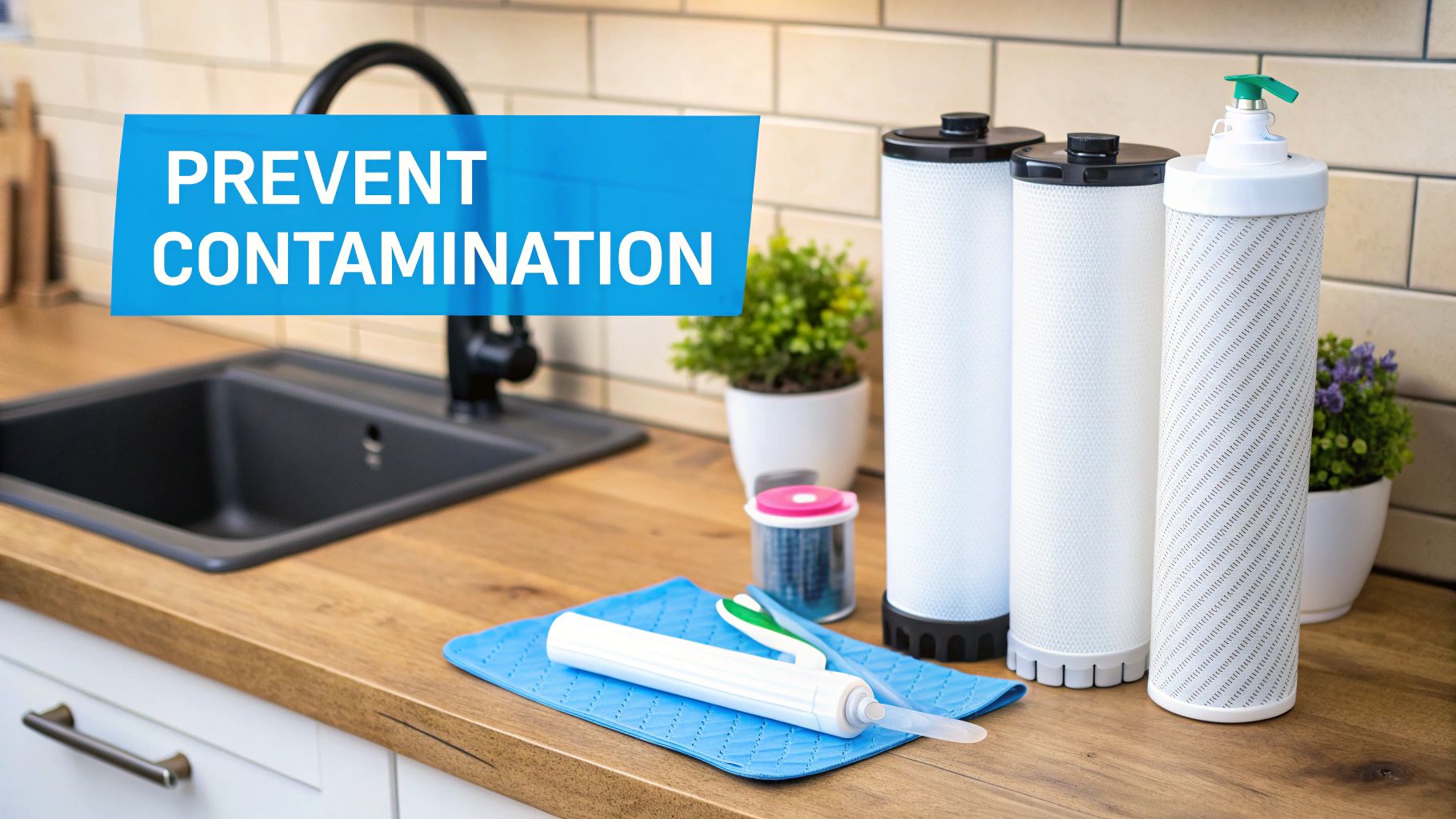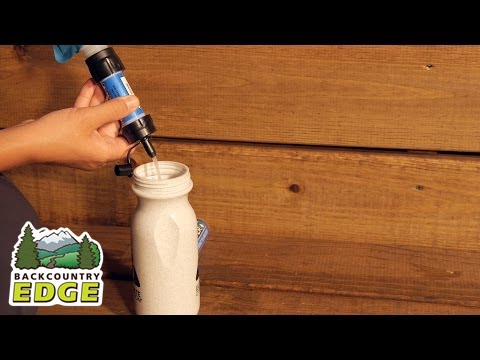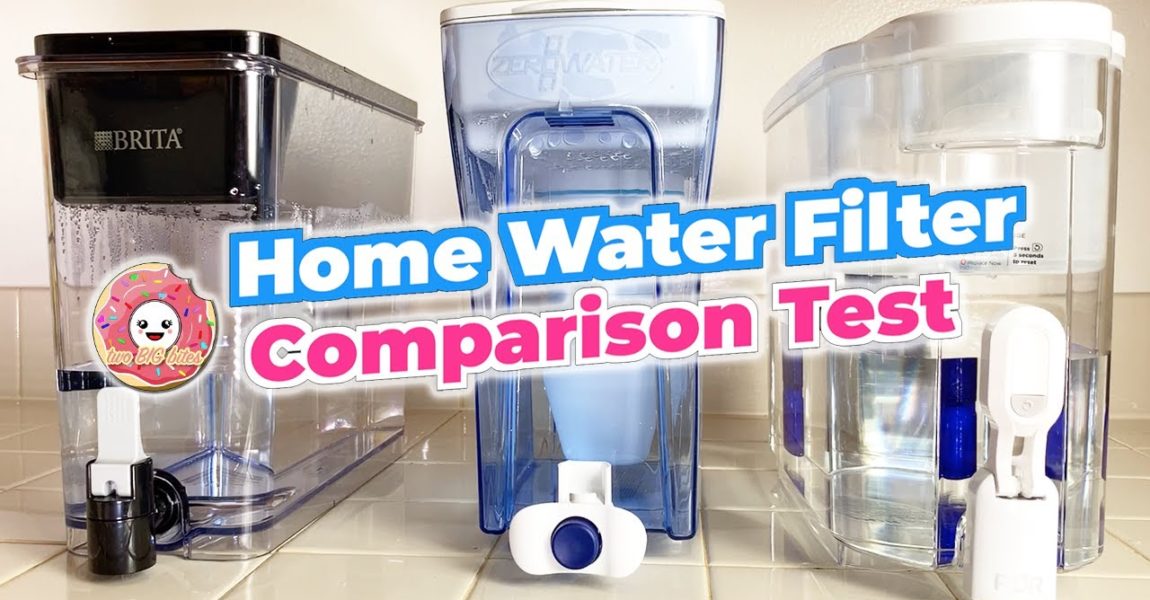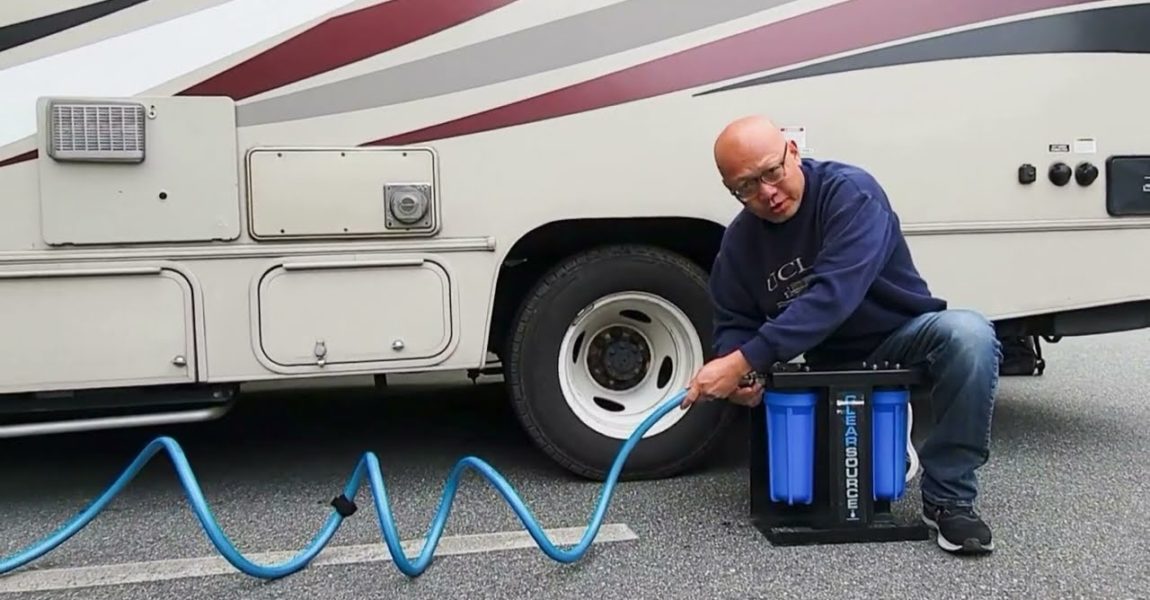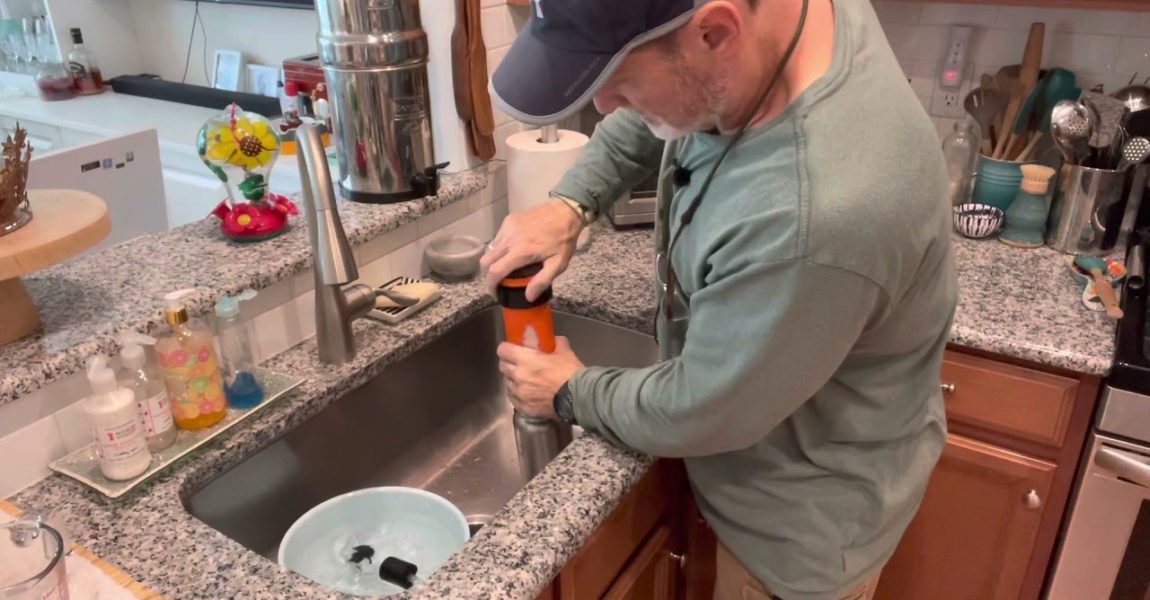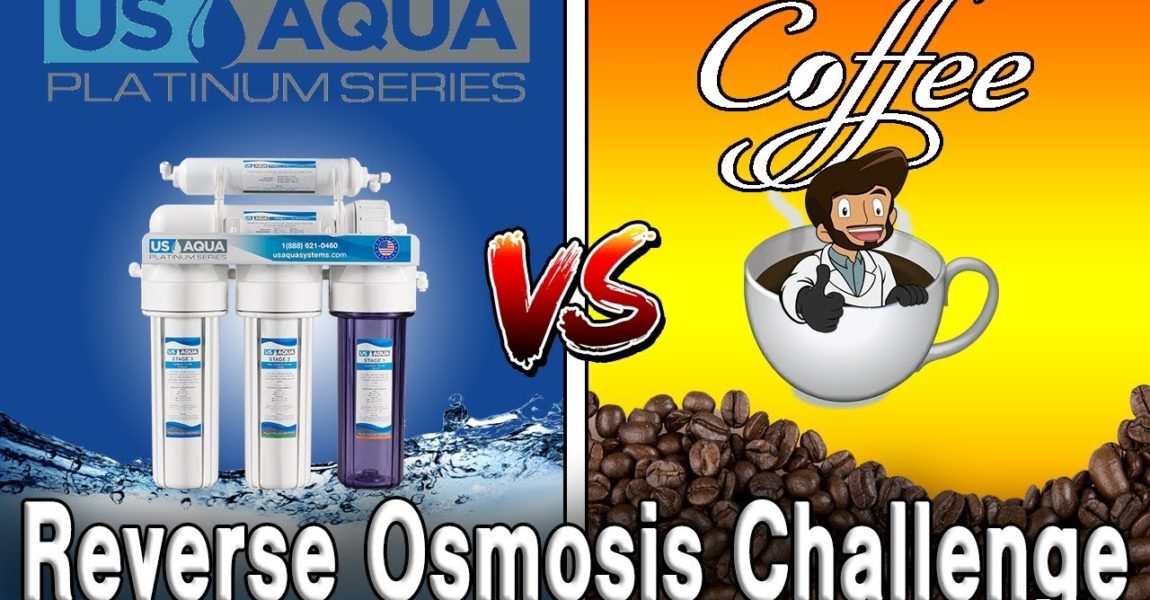
Your Ultimate Guide to Testing for Heavy Metals and Choosing the Right Home Water Filter
You can’t always trust your eyes. That crystal-clear water flowing from your kitchen tap might be hiding some nasty secrets. The only real way to know what you’re drinking is to test water heavy metals—we’re talking about invisible villains like lead and arsenic that pose serious health risks. Getting proactive about testing is the single best way to make sure the water in your home is safe and to find the perfect filtration system for your family.
The Hidden Journey of Your Drinking Water
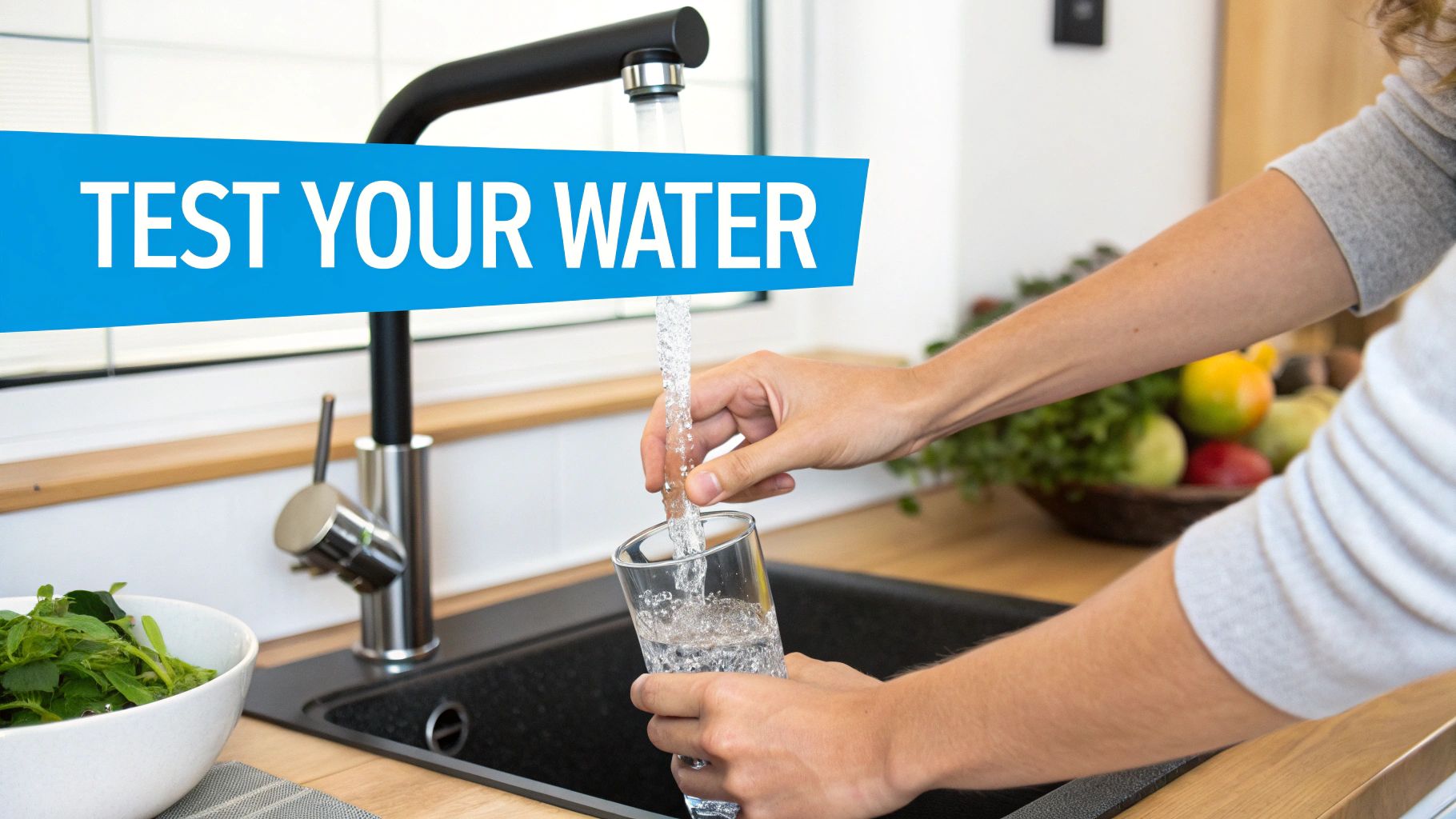
It’s easy to get a false sense of security, especially if your local water report comes back with a clean bill of health. But here’s the thing: those reports only tell part of the story. They test the water at the treatment plant, not at the end of its journey—your faucet. This is where a home filtration strategy becomes your best line of defense.
The real problem often crops up in the miles of pipes the water travels through to get to you. Much of this infrastructure is decades old, and that’s where heavy metal contamination can really take hold.
For instance, many older homes and communities still have plumbing made with lead or copper. Over time, these pipes corrode, and tiny, microscopic particles flake off into the water passing through. This means that water that was perfectly safe when it left the plant can pick up a load of contaminants just a few feet before it fills your glass—a problem only a point-of-use or whole-house filter can solve.
Sources Beyond Your Pipes
It isn’t just about the pipes leading to your house, either. The water source itself, whether it’s a city supply or a private well, is exposed to all sorts of environmental factors that can introduce heavy metals long before it ever gets treated.
A few common culprits include:
- Industrial Runoff: Factories and manufacturing plants can dump wastewater loaded with harmful metals. This is a massive global problem. In India, for example, an estimated 260 million liters of industrial wastewater, thick with metals like chromium and lead, flow into the Ganga River every day. That's a staggering amount, and you can read the full research to see the true scale of the issue.
- Agricultural Contamination: The pesticides and fertilizers used on farms often contain heavy metals like arsenic and cadmium. When it rains, these chemicals wash right out of the soil and into rivers, lakes, and the groundwater we rely on.
- Natural Deposits: Sometimes, the problem is right under our feet. Certain heavy metals, like arsenic, occur naturally in the earth's crust and can dissolve into groundwater, especially in areas with certain geological makeups.
The unsettling truth is that even if your water looks, smells, and tastes perfectly fine, it could still have elevated levels of these harmful elements. Because they are colorless and odorless, the only way to be certain is to perform a test.
At the end of the day, your city’s report gives you a general snapshot, but a home test gives you the real picture of what your family is actually drinking. It’s the essential first step to choosing a water filtration system that truly protects your household.
DIY Kits vs. Lab Analysis: Which Water Test Is Right for You?
So, you're ready to find out what's really lurking in your tap water. Great! Your first mission, should you choose to accept it, is deciding how you're going to test it.
When you're looking to test water for heavy metals, you've got two main routes: the quick-and-easy DIY test kit or the comprehensive professional lab analysis. Think of it like this: a DIY kit is like taking your temperature at home, while a lab test is like getting a full diagnostic workup from a specialist. Both are useful, but they serve very different purposes in your quest for clean water.
DIY kits are all about instant gratification. They’re cheap, you can find them almost anywhere, and you get results in minutes. Most work by dipping a test strip into a water sample and matching the color it turns to a chart. It’s a fantastic way to get a quick, general overview and find out if you need to investigate further.
Just keep in mind that these kits are mostly qualitative. They’ll tell you if a contaminant is present, but usually not how much. You'll get a simple "yes" or "no," which might be all you need to decide it’s time to upgrade from a basic pitcher filter. For anyone who enjoys a hands-on approach, using a DIY kit fits right in with other DIY home upkeep strategies.
When Precision Is Paramount
On the flip side, you have professional lab analysis. This is the gold standard for accuracy, no contest. It costs more and you'll have to wait a bit—usually a week or two for the report. But the level of detail you get in return is your secret weapon for choosing the perfect home filtration system.
You'll receive a report with precise, quantitative data showing the exact concentration of various heavy metals, often measured down to the parts per billion (ppb).
This kind of detail is absolutely essential in a few common situations:
- You Have Specific Health Concerns: If someone in your family has a compromised immune system, or if you have infants and young children, knowing the exact levels of contaminants like lead is non-negotiable.
- You're Buying a Filtration System: Before you drop hundreds or even thousands on a whole-house filter, you need to know exactly what you’re trying to remove. A lab report is the blueprint for your filtration strategy.
- You Have a Private Well: Well owners are 100% responsible for their water quality. Regular lab testing is the only real way to make sure your water source is safe from things like agricultural runoff or naturally occurring metals.
Choosing a method isn't just about cost; it's about confidence. A DIY kit gives you a clue, but a lab test gives you the definitive blueprint for building your home's water defense system.
To help you weigh your options, I've put together a simple table that breaks down the key differences between the two methods.
Comparing DIY Test Kits and Professional Lab Analysis
This side-by-side comparison should make it easier to decide which water testing method fits your needs, budget, and how much accuracy you're looking for.
| Feature | DIY Test Kits | Professional Lab Analysis |
|---|---|---|
| Accuracy | Good for presence/absence | Highly accurate quantitative results |
| Cost | Generally $20 – $50 | Typically $100 – $300+ |
| Speed | Instant or within minutes | 1-2 weeks for results |
| Scope | Tests for a limited range of metals | Can test for a wide array of contaminants |
| Best For | Quick screenings, routine checks | Health concerns, filtration planning, well water |
So, what's the verdict? A DIY kit is a fantastic first step. If it flags anything concerning, follow up with a professional lab analysis. That hard data is exactly what you need to pick the perfect filtration solution and declare victory over contaminants.
Getting Your Water Sample Right: The Key to Accurate Results
When you set out to test your water for heavy metals, the accuracy of your results boils down to one simple thing: how well you collect the sample. It's a bit like a crime scene investigation—if you accidentally contaminate the evidence, the lab's findings are useless. A small mistake here can lead you to buy the wrong filter or, worse, miss a real problem entirely.
Luckily, getting a clean sample is easy once you know what to do. The whole process starts with a single question: what are you actually trying to measure? Are you checking the water coming from the city's main line, or are you trying to figure out if your own pipes are leaching lead? Each goal needs a slightly different approach.
First Draw vs. Flushed: The Two Types of Samples
You'll need to understand the difference between a "first draw" and a "flushed" sample. They each tell a unique story about your water and can help you pinpoint where to install a filter.
-
First Draw Sample: This is literally the first water out of your tap in the morning. You collect it before you run any faucets, showers, or flush any toilets. This water has been sitting still in your pipes all night, giving it plenty of time to pick up any contaminants like lead or copper. This is the most important test for sniffing out problems inside your own home's plumbing.
-
Flushed Sample: To get this sample, you'll let the cold water run for a solid 3-5 minutes before filling the bottle. This pushes all the stagnant water out of your home's pipes and pulls in fresh water from the main supply or your well. This sample tells you what the water quality is like before it even gets to your plumbing.
Taking both samples gives you the full picture. If your first-draw results show high lead but the flushed sample is clean, you’ve just pinpointed the problem to your home's pipes or fixtures. Now you know an under-sink filter might be a better solution than a whole-house system.
This simple three-step process—from grabbing a sample to understanding the results—is the foundation of taking control of your water quality.
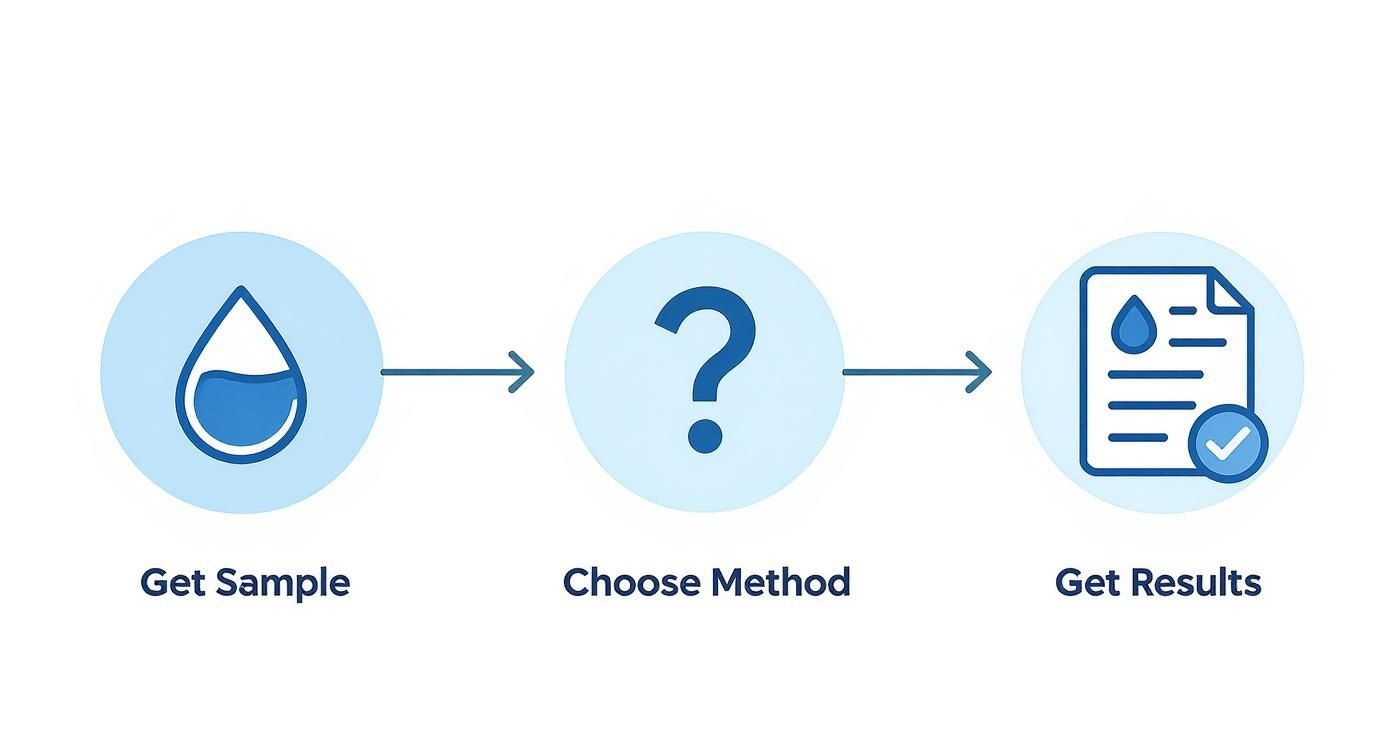
As you can see, it all starts with that first step. A good sample leads to good data and, ultimately, the right filtration choice.
Pro Tips for a Perfect Sample
To make sure nothing skews your results, here are a few critical but easy-to-follow guidelines I always recommend.
- Stick to the Cold Water Tap: Never use hot water for a sample. Your hot water heater often has metal parts that can break down and leach into the water. Hot water also dissolves contaminants from pipes more easily. Using the cold tap gives you a true baseline.
- Take Off the Aerator: See that little screen on the end of your faucet? That's an aerator. It can trap tiny bits of sediment and metal particles, which might fall into your sample and give you a false positive. Just unscrew it before you start.
- Follow the Kit's Instructions to the Letter: Whether you're using a home test kit or a mail-in lab vial, read the directions first. Some labs have very specific rules for how to fill the bottle or require you to ship it back quickly to keep the sample stable.
Following these steps is the best way to ensure that when you test water for heavy metals, you’re getting a real-world snapshot of what’s coming out of your tap. From there, you can confidently find the right filter to fix it.
Decoding Your Water Test Results
Getting that lab report back can feel a little intimidating. It often looks like a foreign language—just a wall of numbers, chemical symbols, and acronyms that don't mean much at first glance.
But don’t sweat it. This report is your treasure map, and it's about to lead you straight to the perfect water filter. Once you get the hang of a few key terms, you’ll be able to read it like a pro.
You’ll probably notice measurements like mg/L (milligrams per liter) or ppb (parts per billion). To put that into perspective, one part per billion is like a single drop of water in an Olympic-sized swimming pool. It sounds microscopic, but for potent heavy metals like lead and arsenic, even those tiny amounts are a big deal.
Your report will list out the metals and their concentrations. Your job is to play detective and compare these numbers against the safety benchmarks set by the Environmental Protection Agency (EPA).
Making Sense of the Numbers
The EPA sets a Maximum Contaminant Level (MCL) for many substances found in public drinking water. This is the absolute highest level of a contaminant that’s legally allowed. For some of the most dangerous metals, though, the goal is much, much stricter.
Let's break down a few common heavy metals and what the EPA guidelines say:
- Lead (Pb): The EPA has set the Maximum Contaminant Level Goal for lead in drinking water at zero. That’s because there is no known safe level of lead exposure, period. The official "Action Level" is 15 ppb—if your water tests above this, you need a filter certified for lead removal.
- Arsenic (As): Arsenic occurs naturally in the environment, but it's highly toxic. The EPA's MCL for arsenic is 10 ppb. Anything higher than this is considered unsafe for long-term consumption and requires a specialized filter.
- Copper (Cu): While less toxic than lead, copper can still cause problems like gastrointestinal distress. Its Action Level is 1.3 ppm (parts per million), which is the same as 1,300 ppb.
The big takeaway here is that just because a metal is detected doesn't automatically mean your water is dangerous. It's all about comparing the concentration found in your test to these established safety limits to determine your filtration needs.
A Real-World Scenario
Let’s say you get your results back and see 22 ppb of lead and 5 ppb of arsenic.
The arsenic level (5 ppb) is under the EPA’s 10 ppb limit, so that’s good news. But the lead level at 22 ppb is a different story—it's significantly over the 15 ppb Action Level. This result is a clear red flag that you have a lead contamination issue that needs to be addressed with a targeted filtration system.
And this isn't just an issue in old cities. Heavy metal contamination is a massive global problem. A 2025 global soil study revealed that up to 17% of the world’s arable land is contaminated with toxic heavy metals, which can seep into water sources. You can discover more about these heavy metal findings to get a sense of the scale of the problem.
Understanding your report is what moves you from just having data to taking decisive action. When you test water heavy metals and decode the results, you gain the clarity needed to choose the perfect filtration solution, ensuring every drop from your tap is safe.
Matching Your Results to the Right Water Filtration System
Okay, you’ve got your test results. The worrying part is over, and now you know exactly what you’re dealing with. This is the moment you can take real action and choose a defense for your home.
It’s all about connecting the dots—linking the data from your water report to a specific filtration technology that will actually solve the problem.
Let's be clear: a basic pitcher filter is great for making water taste better. But when you’re up against serious contaminants like lead or arsenic, you need to bring in the heavy artillery.
For Broad-Spectrum Metal Removal
If your report lit up like a Christmas tree showing several different heavy metals—even at low levels—a reverse osmosis (RO) system is usually your best bet. Think of an RO system as an elite bodyguard for your water supply. It forces water through an incredibly fine membrane with microscopic pores.
This membrane is so effective that it blocks a huge range of contaminants, typically knocking out over 95% of heavy metals like lead, arsenic, mercury, and copper. It’s a true workhorse for getting exceptionally pure drinking and cooking water right at your kitchen sink.
Consider an RO system if:
- Your report shows a cocktail of different heavy metals.
- You’ve got high levels of arsenic, which can be tough for other filters to handle.
- You simply want the highest possible purity for your drinking water.
Investing in the right filter is a direct response to your water quality report. It’s not about guessing; it's about using your data to make a confident, targeted decision that protects your family’s health for years to come.
For Targeted Contaminant Issues
Sometimes your report might pinpoint just one or two specific culprits, like lead leaching from old pipes or unusually high copper levels. In a situation like that, a more specialized filter might be a smarter and more cost-effective choice than a full RO setup.
Kinetic Degradation Fluxion (KDF) filters are a perfect example. These systems use a high-purity copper-zinc alloy that starts an electrochemical reaction, essentially neutralizing contaminants like lead, mercury, and chlorine and turning them into harmless substances. You'll often find KDF media inside whole-house systems or high-end shower filters.
While industrial pollution is a significant source of heavy metals, it's worth noting that strong regulations work. In Europe, for example, industrial releases of metals like lead and mercury into waterways have plummeted over the last few decades. You can discover more about these environmental improvements to see how focused efforts can create cleaner water for everyone.
When you test water heavy metals, you’re creating a roadmap. Your results point you directly to the filtration technology that will turn your tap water from a source of concern into a source of pure, safe hydration.
Common Questions About Home Water Testing and Filtration
Once you’ve decided to test your water, you’re bound to have a few more questions. That’s totally normal. People often wonder about the costs involved, how often they really need to re-test, and whether their filters are actually doing the job they’re supposed to.
Let’s clear up some of that confusion so you can feel confident you're on the right track.
The first thing on everyone's mind is usually the cost. A DIY kit is your most budget-friendly option, typically running under $50. It’s a great starting point. If you go for a certified lab analysis, expect to spend between $100 and $300. I always tell people to think of it as an investment—that detailed lab report is your roadmap to a solid filtration strategy.
How Often Should I Test My Water?
This is a big one, and it really comes down to where your water comes from and what your first test results look like.
- For city water: If your initial tests are clean and you’ve got a reliable whole-house filter, re-testing every 2-3 years is a pretty safe bet. This just confirms your system is still working well and alerts you to any new issues from the municipal supply.
- For well water: You are the water manager, so an annual test should be your standard. Wells can be affected by everything from farm runoff to seasonal weather changes, so staying on top of it is key to catching problems early.
Here’s a pro tip: If you discover high levels of a specific heavy metal, you’ll want to re-test about 1-3 months after you install a new filter. This is the only way to be certain the system is working and has knocked those contaminant levels down to a safe range.
Will My Filter Get Rid Of Everything?
It's a common misconception that any filter will remove all contaminants. The truth is, a filter's effectiveness is all about its specific technology. That basic carbon pitcher filter does a fine job with chlorine, but it won’t touch things like lead or arsenic. This is exactly why you need to match your filter to your test results.
A reverse osmosis (RO) system, for instance, is a powerhouse against heavy metals and can remove over 95% of most contaminants. But even then, no single system gets rid of 100% of everything. When you test water heavy metals, you get the exact data you need to choose the right line of defense.
You can find more helpful information in our extensive library of water filtration advice to guide your decision-making process.
At Water Filter Advisor, we're committed to helping you find the perfect, most effective solution for your home's specific needs. Explore our reviews and guides to make a confident choice for your family's health and safety.
